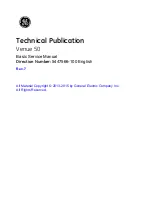
14
STATIONARY TESTING METHOD
Although there are no references to doing this in industry,
we have found that it is best to run several stationary tests of
the system to quickly find the operational settings of the spinner
blades. By spreading material in an empty parking lot or another
area having a paved surface, you will be able to quickly clean
up the discharged material for reuse as well as be able to observe
the uniformity of the spread pattern. Record the general
qualitative characteristics for pattern uniformity and wraparound
(spreading ahead and/or to the sides of the Turf Tender’s
wheels).
We found that, initially, we needed to spread material from
the stationary position and, when done spreading, push the
material into a narrow row (long pile), running across the spread
area. Looking at the amount of material in the strip-pile is a
pretty good indicator of the distribution pattern. After a short
period of time you will be able to look at the distribution (where
it dropped) to determine how uniform the pattern is and eliminate
the need to pile up the material in a row.
As an example of the differences between the two test methods’
results, we found that when we had an obvious W spread pattern
(heavy center and outside edges) using the stationary testing
method, the pan method was indicating that we had a nearly
perfect distribution. The problem is that the pan method did not
accurately reflect where the material was actually deposited after
it had hit the ground, bounced, rolled, and stopped.
Pattern Adjustments
The pattern below shows the optimum distribution of
material behind the spreader from one pass. On the next pass,
the operator should steer at the edge of the pattern, which
overlaps material to the center of the previous pass. This results
in a uniform distribution of material across the ground. Most
importantly, errors in steering cause minimal streaking from
double spreading or gaps. The problem is that it is very hard to
attain this pattern with broadcast spreaders.
Some spreader manufacturers or users prefer to have a
pattern like the following figure. This can give good results but
requires more precise steering to achieve the exact interval
needed. The pattern must be tested with pans to determine the
point half way from the edge to the corner. Then the steering
interval must be maintained or gaps and overspreading result.
The establishment of these preliminary setup steps was
developed through extensive testing and experience. For example,
the conveyor belt’s rear roller distance of 5 1/4 in. (13.3 cm)
from the back wall of the vertical spinner chute was found to
give the best control of spread pattern distribution with all of the
various spinner blades.
Basic Spinner Adjustments
If the spread pattern is heavy in the middle, adjust all of
the blades on each spinner disk two notches in the hold direction;
then test the spread pattern. If necessary, move the blades two
more notches in the hold position.
If the spread pattern is heavy on the outside, adjust all of
the blades on each spinner disk two notches in the release
direction; then test the spread pattern. If necessary, move the
blades two more notches in the release position.
The following photo illustrates the hold and release angles
for a right spinner disk which rotates counterclockwise.
Collection Methods
STANDARD PAN COLLECTION METHOD
The typical method of testing the spread pattern is to place
collection pans in a row going across the direction of travel.
Make one or more passes across the pans and measure the
amount of material in each. This doesn’t work with large
broadcast spreaders.
The amount of material collected in each pan can be graphed
to reveal the type of spread pattern you are producing. A perfect
rectangular pattern is very hard to achieve and, in some cases
such as fertilizer application, not desirable because you would
have to operate impossibly precise to avoid skips or double
application. The inherent limitation of this testing method is
that particles coming out of a broadcast spreader have a very
low trajectory angle with high velocity and usually skip across
the surface. Most test runs will have sand sliding across the
pan and launching out the opposite side. We have even tried
using square “egg crate” inserts of varying sizes to provide
better capture of material but we still had material skipping
across the top. Therefore, the industry-standard pan collection
method does not accurately reflect the true distribution of
material.
OPERATION






































